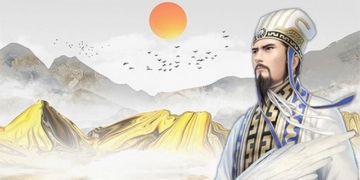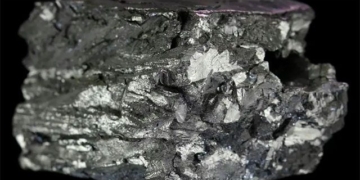A years-long search has attempted to explain one of the most extreme and challenging cases of human survival.
Mount Rokkō in Kobe, Japan is a natural scenic spot, with rolling hills, long trails, and stunning views of Osaka Bay. Each year, this 914-meter-high peak becomes awash with vibrant red, yellow, and orange leaves in autumn, making it a popular destination for barbecues and youth gatherings.
In October 2006, Mitsutaka Uchikoshi, a 35-year-old civil servant, went hiking with a group of friends on Mount Rokkō. After a day of eating and chatting at the summit, Uchikoshi’s friends decided to take the cable car down the mountain to head home. Uchikoshi chose to descend alone by following one of the trails.
Then he disappeared.
On his way down, Uchikoshi slipped and fell, hitting his head and fracturing his pelvis. Unable to move or call for help, this injured man could only lie on the mountainside. At night, the autumn chill here dropped temperatures to 10 degrees Celsius, with frost seeping into his bones. He lost consciousness.
Twenty-four days later, he was found by a passing hiker and taken to Kobe City Medical Center General Hospital. At that time, Uchikoshi’s body temperature had dropped significantly, and he was cold to the touch. Many of his internal organs had failed. According to news reports at the time, the doctors caring for Uchikoshi explained that this man had entered a state of “similar to hibernation.”

This story quickly captivated scientists for two reasons:
First, it is a tale of extraordinary survival. Uchikoshi endured pain from his fractures, extreme cold, and severe hunger—conditions that should have killed him. Yet, not only did he survive, but he was also discharged from the hospital after 50 days without lasting harm. If his doctors were correct, something must have changed in Uchikoshi’s brain, allowing his body to enter an unprecedented state of stasis. But what exactly was it?
Second is the story itself. Doctors at the Kobe hospital even believed that Uchikoshi was no longer alive when he was brought in. A series of recorded information suggests that this was indeed a state of hibernation. Some argue that this miracle is physiologically impossible. However, after Uchikoshi was discharged, the media and scientists seem to have forgotten about his case. There are no reports in scientific literature detailing exactly what allowed this man to survive, nor any explanation for his extraordinary resilience on the mountain. Nevertheless, this Japanese man’s story remains one of the most frequently cited examples of the potential for human hibernation.
What really happened to Mitsutaka Uchikoshi on that mountain in 2006?
To understand the challenges this man faced on the mountain, we can explore how scientists are using hypothermia to induce suspended animation in severely injured patients. This is also the direction that aerospace companies are taking in developing hibernation protocols for interplanetary travel, beyond the orbits of the Moon and Mars. Simultaneously, researchers are investigating how neuroscientists are uncovering the chemical mysteries within the brain to trigger hibernation-like states in other mammals.
The Zombie Dogs
In 1999, a group of researchers from the Safar Center for Resuscitation Research at the University of Pittsburgh sent a pack of hunting dogs to the other side.
Then they brought them back.
This experiment was later dubbed “The Zombie Dogs”, when it was reported in the New York Times in 2005. It also demonstrated that rapid cooling of the circulatory system could induce a state of suspended animation in these dogs.
In the Safar Center’s procedure, the dogs’ blood was drawn out of their bodies and gradually replaced with a cold saline solution that provided essential nutrients and oxygen. Without blood, the dogs’ hearts stopped beating, and their brains ceased functioning. This is known as clinical death. The researchers removed the cold saline solution and returned warm blood after 60 minutes. The dogs, after receiving strong electric shocks, were revived. Most of them suffered no brain damage.
This is one of the profound experiments studying “hypothermia therapy”, a method that has become popular in hospitals worldwide for certain conditions, such as heart attacks and brain injuries due to oxygen deprivation. If we think of the brain as a computer, hypothermia therapy allows it to enter a standby mode, keeping it powered while preventing it from shutting down completely. This gives doctors time to repair and restart the patient.
Research on the zombie dogs has opened up new possibilities, allowing trauma patients who may quickly lose liters of blood from stab wounds or gunshot injuries to avoid death if their bodies are effectively cooled.
The scientific mystery of hypothermia treatment has been well explored. Our cells use oxygen to generate energy. Under normal circumstances, the heart pumps blood throughout the body. In trauma patients, blood loss leads to cardiac arrest, and cells quickly starve and die. At this point, cooling the body temperature by a few degrees slows cellular activity, thereby requiring less energy and oxygen.

In 2016, in a clinical trial approved by the U.S. Food and Drug Administration (FDA), a team of surgeons at the University of Maryland School of Medicine, led by Dr. Samuel Tisherman, began investigating how this procedure could help patients survive. It was hoped that the procedure – called Emergency Preservation and Resuscitation – would improve survival rates for trauma patients without causing any brain damage.
Scientists have shown that this procedure is effective in pigs, but Tisherman’s human trials would not be easy. It requires patients to arrive at the emergency department while specialized doctors, like Tisherman, are inside and ready to perform the procedure. The first trial took place over a decade ago, but it only recently reached a significant milestone when the first patient was enrolled and temporarily placed in a state of “suspended animation” in November 2019. A total of 10 people are expected to be enrolled once the trial is complete.
The full results of the trial are still pending and have been delayed twice, partly due to the impact of the Covid-19 pandemic. It is currently expected to conclude in December 2023, according to the U.S. clinical trial database.
So, could this be a potential answer to Uchikoshi’s fortune? Did hypothermia contribute to his miraculous survival? Possibly. If Uchikoshi underwent a form of hypothermia that forced his brain into a standby mode, it could have slowed his metabolism and reduced the amount of energy he needed to derive from food and water.
However, compared to Uchikoshi’s more than 20 days, current clinical trials only attempt to keep patients in a state of inactivity for a few minutes or at most an hour or more—long enough for doctors to manage the trauma. As Tisherman told New Scientist in 2019: “I want to make it clear that we are not trying to send people to Saturn.”
But Uchikoshi’s long duration of inactivity and subsequent recovery suggest that such a future might be possible.
To the Moon or Mars
At its closest, Saturn is about 1.2 billion kilometers from Earth. A crewed journey to this planet could take up to five years and require vast resources to accommodate, feed, and entertain astronauts. But it wouldn’t be necessary if you could put passengers into a hibernation-like state.
Short flights often pose some risks to astronauts, but many decades into the future, humans may spend months or years adventuring further into space, beyond the Moon and Mars.
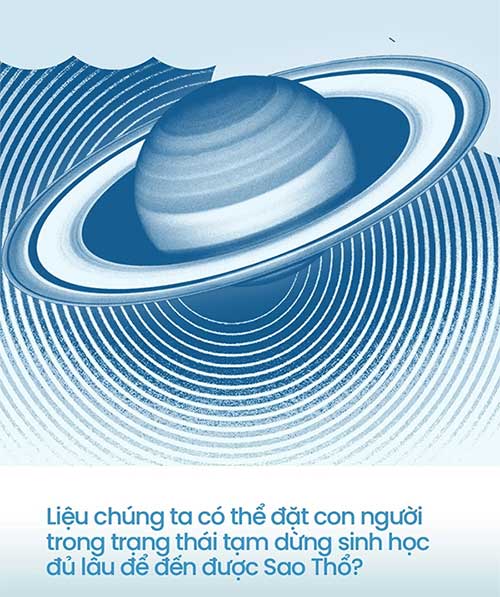
In long journeys, the biological and physical risks that crew members face are numerous. Continuous cosmic radiation bombards the body, high-intensity isolation can devastate the mind, and the conditions of zero gravity can lead to muscle and bone degradation.
“From studies on animals, it is known that hibernation can minimize and positively affect all three of these issues,” said Jennifer Ngo-Anh, a scientist at the European Space Agency.
Hibernating animals, such as bats and hedgehogs, do not experience muscle or bone degradation. Other animals, like bears, enter a state similar to hibernation known as Torpor. Torpor is essentially defined as an involuntary hibernation state that organisms must enter to survive in harsh environments lacking energy sources such as food and water. It is essentially a simplified version of true hibernation.
If we can clarify why animals do this and understand how to induce Torpor in humans, we may be able to prevent and address some of the most challenging issues related to long-duration space travel.
“This is a game-changing technology,” said John Bradford, president and CTO of SpaceWorks Enterprises, an engineering firm based in Atlanta, USA. Bradford believes that the ability to induce hypothermia and place humans into a state of biological stasis will allow us to “actually achieve something in space.”
Bradford and his team have been researching human hibernation since 2012 and received a second round of funding in 2016 through a NASA program. Their idea is to create and regulate the Torpor state in astronauts using principles from hypothermia treatment.
“Therapeutic hypothermia is nothing as severe as what you see in the movies,” Bradford stated. “You always see someone going into biological stasis for 100 years or something. We don’t need to go to that level.”
Instead, SpaceWorks has proposed a method called synthetic Torpor. In this approach, a theoretical mission to Mars would see astronauts undergo a maximum hibernation period of 14 days. They would then be awakened, taking a few days to recover their initial state, before entering hibernation again. This cycle would repeat throughout the journey.
“By breaking it down, the challenges will be significantly reduced. The hibernation model during the work shift means there will always be one crew member awake throughout the more than 200-day journey, addressing safety concerns or any emergencies that may arise,” Bradford explained.
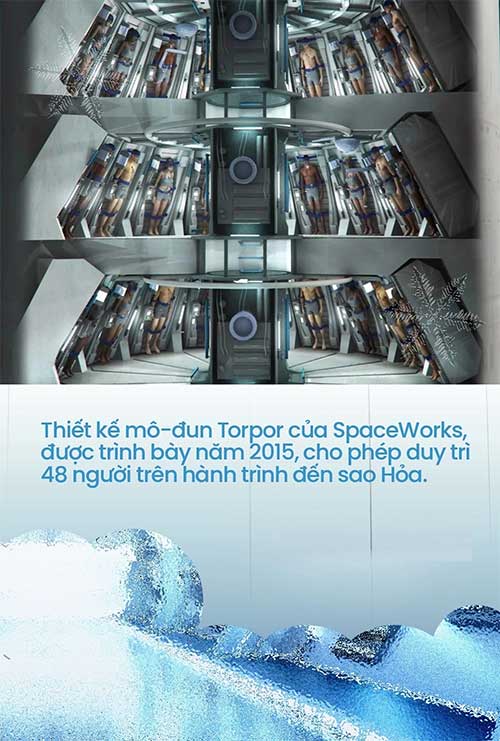
Bradford noted that synthetic Torpor could be key to establishing colonies on the Moon if we choose to pursue that path. There would be no need to send small crews to the Moon; instead, entire communities could be sent, although this complicates infrastructure issues. “If you want to send a thousand people, three days is not an easy problem,” he said.
But Torpor might be the answer. According to him, it is possible to put people into a low metabolic state on Earth, start the spacecraft, land on the Moon, and then wake everyone up a few days later.
It sounds simple, but our understanding of how hibernation works is still too rudimentary to achieve what Bradford proposes in the near future. Humans are not naturally designed to hibernate. Our bodies are not built to operate in that manner. The survival of Uchikoshi on a Japanese mountain is an exception, not the norm, although it may suggest that there are no lasting effects from a state like synthetic Torpor.
Recent studies also indicate that the key to inducing such a state may lie in manipulating a specialized group of cells located within the brain’s temperature-regulating region.
The Q Neuron Question
Mice are not natural hibernators, but they can significantly slow their metabolism when food is scarce. This can also be described as a state of Torpor.
Researchers have been able to harness this physiological oddity and induce Torpor states in laboratory rodents by restricting their food intake or lowering the temperature of their enclosures. These interventions provide researchers with the opportunity to explore the mechanisms behind these states, particularly concerning changes occurring in the brain.
Two studies published in the journal Nature in 2020 examined how clusters of brain cells, or neurons, are linked to hibernation-like states in rodents. Both groups focused on a brain region known as the hypothalamus, with a specific cluster of cells responsible for regulating temperature. They found distinct populations that could be interconnected.
One group, led by Takeshi Sakurai, a researcher at the University of Tsukuba in Japan, focused on a set of brain cells associated with the brain’s complex temperature regulation pathways. The research team named this group of cells Q neurons. Using genetically modified mice, Sakurai and his team were able to control these cells, injecting a drug into the mice to activate them, similar to flipping a switch.
Activating the Q neurons reduced the body temperature of the mice from 36 degrees Celsius down to as low as 22 degrees Celsius. Their heart rate and respiration slowed. The mice were maintained in this hibernation-like state for two days—sometimes even longer. After the Q neurons were turned off, Sakurai’s team examined the organs of the mice and found no significant changes in the brain, heart, liver, or kidneys.
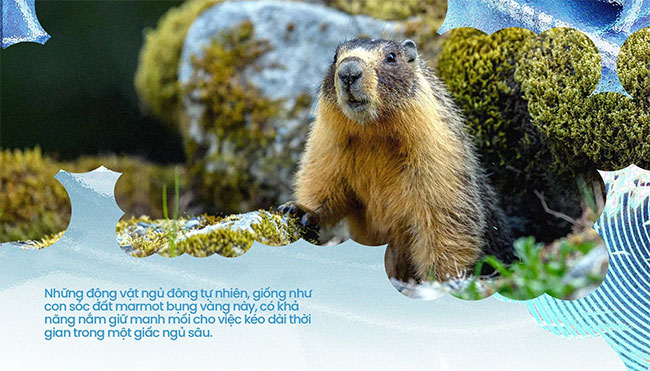
Hypothermia typically causes shivering and ultimately loss of consciousness, but Sakurai believes that hypothermia induced by Q neurons (QIH) does not make the mice “feel cold.” Instead, it “alters the state of the body,” according to the researcher. These brain cells signal to other organ systems and hormones to make adjustments, tricking the body into entering an energy-saving state by reducing metabolic demands.
“For a mouse in QIH conditions, a body temperature of 22 degrees Celsius is a comfortable state,” Sakurai noted.
Rodents are not natural hibernators, so unlocking this potential represents a significant leap forward in understanding the brain’s control systems. Sakurai mentioned that his team is likely to study yellow-bellied marmots, a species that can enter natural hibernation, to see if manipulating Q neurons produces similar effects as observed in mice.
Genshiro Sunagawa, a co-author of the research paper from the RIKEN research institute in Japan, stated that the research team wants to examine individual tissues and organs in the hibernation induced by Q neurons to understand precisely how their metabolism slows down. This could lead to methods targeting individual organs to enter a state of biological stasis. He said, “This will certainly impact regenerative medicine or transplant medicine.”
The research also highlights potential mechanisms that could explain the hibernation-like state of Uchikoshi. It is unclear how his brain was affected during his time on the mountain, but if Q neurons were active, perhaps they tricked his body into believing that 10 degrees Celsius was not life-threatening, even quite comfortable.
However, Q neurons may only be part of the equation. Another study conducted by Harvard University neuroscientist Sinisa Hrvatin examined neurons in another part of the hypothalamus. The activation of these cells, known as avMLPA neurons, induced Torpor in mice. Essentially, both studies indicate that stimulating similar regions of the brain is sufficient to induce deep sleep in rodents.
But the brain is a chaotic network system with constant electrical impulses. Simply identifying clusters of cells that seem to alter the physiological state of the body is not enough to reliably induce hibernation in humans.
“More research is needed to understand how animals enter, regulate, and survive in these states and whether they can be safely induced in other mammals—including humans,” Hrvatin stated.
Both researchers, Sunagawa and Sakurai, are aware of the story of Mitsutaka Uchikoshi. However, the information they possess is quite basic. Fortunately, there are those who understand this story better than anyone.
The Ghost of Mount Rokkō
Two doctors directly treated Uchikoshi in 2006. Both have pursued this issue for over a decade.
The primary physician is Takeya Minami, a cardiologist. In an interview in December 2021, he stated that the incident had a “significant impact on his career.” Since Uchikoshi was admitted to the hospital 16 years ago, he has sought to clarify what happened on Mount Rokkō. He has presented this issue at conferences, speaking with experts in hormones, metabolism, body temperature regulation, and neuroscience to try to understand how Uchikoshi survived.
“This is very important for the field of medicine in clarifying this specific case,” Minami said.

Specifically, when Uchikoshi arrived at the hospital, he was taken to the emergency room, where doctors including Minami and another physician, Daisuke Mizu, were present. The rectal thermometer reading at that time showed that Uchikoshi’s core temperature was only 22.4 degrees Celsius, approximately 15 degrees lower than normal. Mizu remarked, “We were surprised that hypothermia could become that severe.”
Minami and Mizu assisted in warming Uchikoshi’s body by bathing him in warm water, but almost immediately, he went into cardiac arrest. This often occurs in patients suffering from hypothermia due to cold exposure, leading to irregular heart rhythms. The team of doctors performed artificial respiration for more than two hours until his body gradually warmed up, and eventually, Uchikoshi’s heart began to beat again on its own.
Subsequent examinations confirmed that Uchikoshi had been immobile for an extended period, ruling out the possibility that he could have moved around the mountain. X-rays revealed that his hip bone was fractured, and it had started to heal by the time he was rescued. His stomach was completely empty. He also suffered from bug bites on his legs and sunburn, particularly on the areas of his arms that had been raised to shield his face before he lost consciousness.
Minami stated that he was “simply amazed” to see Uchikoshi survive without any lasting health issues. However, the case was beyond the norm, leaving him perplexed. He reviewed all physiological data, studied weather patterns on the mountain, and even used computer simulations to recreate what was happening in Uchikoshi’s body during the life-and-death ordeal.
From everything he learned, Minami theorized that the patient’s body temperature may have dropped in the days following his disappearance and fall. When Uchikoshi lost consciousness, his brain took over, slowing his basal metabolic rate to conserve energy and keep his organs functioning. After discussing the case with colleagues for many years, Minami arrived at a somewhat vague conclusion.
“I can’t say that this case is definitely due to hibernation,” he said, but referred to it as a condition “similar to torpor.”
A Dream of Deep Sleep
Sometimes, miraculous survival stories continue to astonish scientists.
Six years after Uchikoshi left Kobe Hospital, another extraordinary survival case came to light. A 44-year-old Swedish man was trapped inside his car for two months during a snowstorm, buried under a thick layer of snow, with outside temperatures dropping to -30 degrees Celsius. He told police that he had no food but survived by eating snow.
This man’s doctors were as astonished as those at Kobe Hospital, suggesting that his body may have adapted to the cooler temperatures inside the car, causing his body temperature to drop below normal in an effort to conserve energy.
In summary, from zombie dogs to the Swedish survivor, these cases highlight the body’s ability to respond to temperature changes. A chilly winter evening can inspire subconscious reactions such as goosebumps and shivers. Yet, it seems that humans retain some extraordinary capabilities to go even further, entering a state of biological pause without lasting negative effects, even in the harshest conditions.
However, Dr. Minami himself eventually lost track of Uchikoshi. Although the man regularly visited Kobe Hospital for two years following his accident, from 2008 onward, no one knew what had happened to him.
Returning to the initial question: What really happened to Uchikoshi on the mountain in 2006? Clearly, we still do not have an answer. There is no way to know exactly how his brain and body reacted while he was unconscious for over three weeks. Perhaps scientists will not have the chance to learn from how he escaped his fate. All we know for sure is that he survived.
Yet, to this day, the dream of human hibernation persists. In a few decades, feats like Uchikoshi’s may not just be involuntary short sleeps. Instead, we could be intentionally cooled for hours following a traumatic accident, giving doctors time to heal, or enter prolonged metabolic stasis for months to survive the journey to Mars and beyond.
Perhaps, in those moments, we will finally understand what happened to Mitsutaka Uchikoshi.

















































